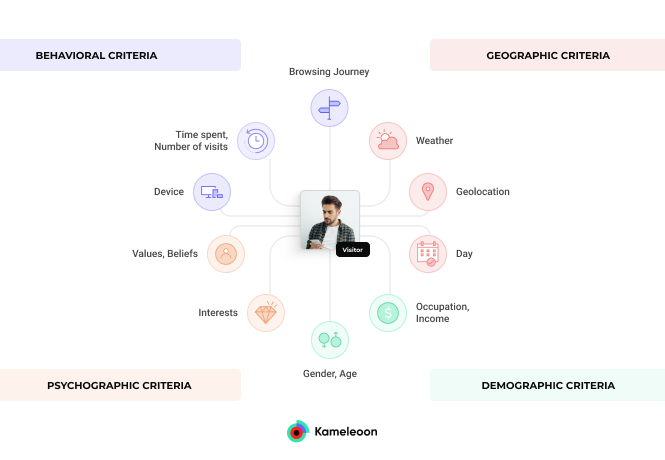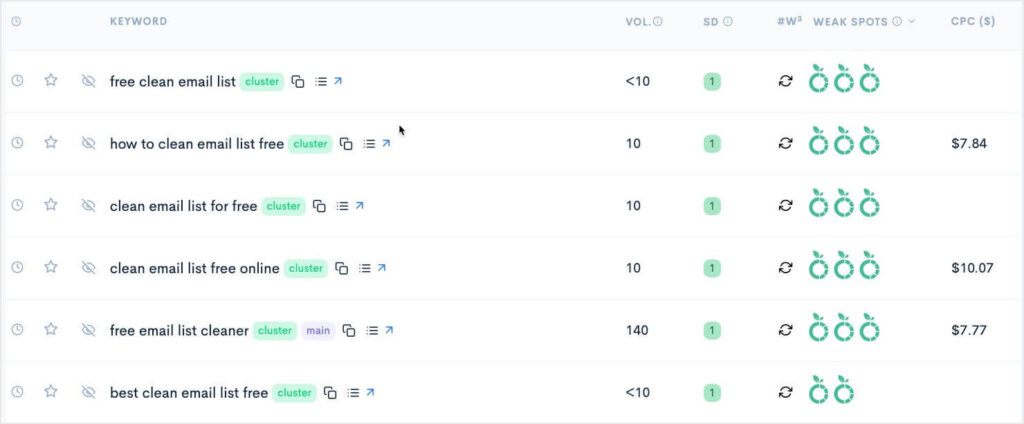Segmenting email lists can be a challenging task. It requires precision and careful planning.
Many marketers face issues when trying to segment their email lists effectively. Poor segmentation can lead to lower engagement rates and higher unsubscribe rates. Understanding the common difficulties can help you improve your email marketing strategy. By identifying the challenges, you can find ways to address them and achieve better results.
This blog will explore the common difficulties in segmenting email lists and offer insights to overcome them. Stay tuned to learn how to refine your email marketing efforts and reach your audience more effectively.
Table of Contents
Importance Of Email List Segmentation
Email list segmentation is a crucial part of any successful email marketing strategy. By dividing your email list into smaller, more targeted groups, you can send more relevant content to your subscribers. This helps you better connect with them and meet their specific needs. Let’s dive deeper into why email list segmentation is so important.
Boosting Engagement
Segmenting your email list can significantly boost engagement. When you send tailored content to different segments, your emails resonate more with your audience. People are more likely to open emails that interest them.
Personalized content leads to higher open and click-through rates. Subscribers feel valued when they receive content that matters to them. For instance, if you segment by age, you can send age-appropriate offers and information.
Consider this simple example:
| Segment | Content Type |
|---|---|
| New Subscribers | Welcome Emails |
| Repeat Customers | Loyalty Rewards |
| Inactive Users | Re-engagement Campaigns |
Increasing Conversion Rates
Segmented email lists can also lead to higher conversion rates. When subscribers receive relevant offers and information, they are more likely to take action. This can mean making a purchase, signing up for a webinar, or downloading a resource.
Here are a few ways segmentation can help increase conversions:
- Behavior-based segments: Send targeted emails based on past behavior, such as previous purchases or browsing history.
- Demographic segments: Tailor offers to specific demographics like age, gender, or location.
- Interest-based segments: Send content related to subscribers’ interests or preferences.
For example, an online clothing store can send different promotions to men and women. This targeted approach can result in more purchases as the offers are more relevant to each group.
Common Challenges In Segmenting Email Lists
Segmenting email lists can significantly improve the effectiveness of your email marketing. It allows you to target specific groups with tailored messages. However, it comes with its own set of challenges. These challenges can affect the overall success of your email campaigns.
Data Quality Issues
One major challenge is data quality. Poor data can lead to ineffective segmentation. Inaccurate or outdated information can result in emails being sent to the wrong audience. This can decrease engagement rates. To solve this, ensure your data is accurate and up-to-date.
Lack Of Resources
Another challenge is the lack of resources. Many businesses do not have dedicated staff for email segmentation. This can make it difficult to manage and segment lists effectively. Tools and automation can help, but they require investment and training.
Effective Data Collection Techniques
Segmenting email lists can be challenging. Collecting data effectively helps create targeted segments. This leads to better engagement and higher conversion rates. Explore these techniques to gather valuable data and segment your lists with ease.
Surveys And Feedback Forms
Surveys are powerful tools for collecting data. They provide direct insights from your audience. Use short and clear questions. Avoid complex language. Ask about preferences, interests, and needs.
Feedback forms are similar. They capture user experiences and opinions. Place them on your website. Send them in emails. Encourage users to share their thoughts. This data helps refine your segments.
Here are some tips for creating effective surveys and feedback forms:
- Keep questions short and simple.
- Use multiple-choice questions for easy responses.
- Include optional open-ended questions for detailed feedback.
- Offer incentives for completing surveys.
- Analyze the data regularly to stay updated.
Website Behavior Tracking
Tracking website behavior is crucial. It helps understand user actions on your site. Use tools like Google Analytics. Monitor page visits, clicks, and time spent on each page.
Behavior tracking provides valuable insights. It shows what content users engage with. Identify patterns and trends. Segment your email lists based on these actions.
Consider tracking the following behaviors:
- Pages visited frequently.
- Time spent on specific pages.
- Click-through rates on links and buttons.
- Products viewed or added to the cart.
- Downloads of resources or materials.
These insights help create targeted segments. Send personalized emails. Increase engagement and conversions.
Utilizing Automation Tools
Segmenting email lists can be challenging. Automation tools streamline this process. They ensure the right message reaches the right audience. Let’s explore two vital automation tools.
Email Marketing Software
Email marketing software helps create and send emails. It also helps segment your list. These tools use data to group subscribers. They consider factors like:
- Demographics
- Behavior
- Engagement
For example, you can target users who clicked on a link. Or those who opened a specific email. This leads to more relevant content. It boosts engagement and conversion rates.
Popular email marketing software includes:
| Software | Features |
|---|---|
| MailChimp | Easy segmentation, A/B testing |
| Constant Contact | Customizable templates, analytics |
| Sendinblue | Advanced segmentation, SMS marketing |
Customer Relationship Management Systems
Customer Relationship Management (CRM) systems store customer data. They track interactions. This data is valuable for segmentation.
CRMs allow you to:
- Track customer behavior
- Identify purchase patterns
- Segment based on past interactions
Advanced CRMs offer automation features. These features can segment customers automatically. This saves time and increases efficiency.
Some widely used CRMs are:
| CRM | Features |
|---|---|
| Salesforce | Comprehensive analytics, automation |
| HubSpot | Lead tracking, email marketing integration |
| Zoho CRM | Customizable dashboards, workflow automation |
Utilizing these tools enhances segmentation. It ensures your emails are targeted. This improves engagement and drives success.
Personalization Strategies
Personalization is key to a successful email marketing campaign. It increases engagement and conversion rates. But segmenting email lists can be challenging. This is where personalization strategies come in handy. They help in tailoring content for different segments of your audience.
Dynamic Content
Dynamic content allows you to create different versions of an email. The content changes based on the recipient’s preferences. This can include their location, past purchases, or browsing history.
Here are a few ways to use dynamic content:
- Location-based content: Show different content based on the recipient’s location.
- Past purchase history: Recommend products similar to past purchases.
- Browsing behavior: Tailor content based on pages visited on your website.
Behavioral Targeting
Behavioral targeting involves using data about a recipient’s behavior. This can include email opens, clicks, and web activity. It helps in sending relevant content at the right time.
Some effective behavioral targeting strategies:
- Abandoned cart emails: Remind customers about items left in their cart.
- Re-engagement emails: Target subscribers who haven’t interacted in a while.
- Post-purchase emails: Send follow-up emails after a purchase is made.
Both dynamic content and behavioral targeting are powerful personalization strategies. They make your emails more relevant and engaging. This leads to higher open rates and conversions. Implementing these strategies can help overcome the difficulty in segmenting email lists.
Credit: seatunnel.apache.org
Segmentation Based On Demographics
Segmenting email lists based on demographics helps target specific groups. It allows for personalized content that resonates. Two key demographic factors include age and gender, and location.
Age And Gender
Age is a crucial demographic factor in email segmentation. Different age groups have unique interests and needs. For example, teenagers might prefer trendy content. Meanwhile, seniors might look for health tips.
Gender also plays a significant role. Men and women often have different preferences. Tailoring emails based on gender can increase engagement. For instance, fashion brands can send relevant styles to men and women.
Location
Location-based segmentation offers many benefits. It considers time zones, local events, and weather. This ensures emails reach subscribers at the best time. It also allows for content that matches local interests.
For example, a local store can promote events to nearby subscribers. Or, an online store can highlight seasonal products. This makes the content more relevant and engaging.
Behavioral Segmentation Techniques
Behavioral segmentation techniques focus on understanding customer actions and patterns. This allows for more personalized and relevant email marketing campaigns. By analyzing behaviors, marketers can create targeted segments. This leads to higher engagement and conversion rates.
Purchase History
Purchase history provides valuable insights into customer preferences. By examining past purchases, you can identify trends and predict future needs. Segmenting customers based on their buying habits helps tailor your email content. This ensures the messages resonate with the recipients.
For instance, frequent buyers may appreciate exclusive offers. New customers might need more product information. Loyal customers could be rewarded with special discounts. These targeted approaches increase customer satisfaction and loyalty.
Email Engagement
Email engagement measures how recipients interact with your emails. Metrics like open rates, click-through rates, and time spent on emails are key indicators. Segmenting your list based on these metrics helps refine your email strategies.
Engaged users should receive more frequent updates and promotions. Unengaged users may benefit from re-engagement campaigns. Tailoring content to their interaction levels increases the chances of re-capturing their interest.
By focusing on these behavioral segmentation techniques, you can address the difficulty in segmenting email lists. This leads to more effective and efficient email marketing efforts.

Credit: www.kameleoon.com
Testing And Optimizing Segments
Testing and optimizing segments is crucial for effective email marketing. Proper testing ensures that your email reaches the right audience. Optimizing segments can lead to better engagement and higher conversion rates. Let’s dive into some important aspects of this process.
A/b Testing
A/B testing helps you compare different versions of your emails. Send two versions to a small segment of your list. Measure which version performs better. Use the winning version for the rest of your audience. This method helps you understand what your audience prefers.
Analyzing Results
After conducting A/B tests, analyze the results carefully. Look at open rates, click-through rates, and conversions. Identify patterns and trends in the data. This helps you understand which elements work best. Refine your segments based on these insights.
It’s important to keep track of your tests. Document your findings and make adjustments. Regular analysis helps improve your future campaigns. Continuous optimization leads to better results over time.

Credit: optinmonster.com
Frequently Asked Questions
What Is Email List Segmentation?
Email list segmentation divides your email list into smaller groups. These groups share common traits or behaviors.
Why Is Segmenting Email Lists Important?
Segmenting helps send relevant content. This increases engagement and reduces unsubscribe rates.
What Challenges Come With Email Segmentation?
Challenges include collecting accurate data, choosing the right criteria, and managing multiple segments.
How Do I Collect Data For Segmentation?
Use sign-up forms, surveys, and purchase history. This helps gather necessary information for segmentation.
What Criteria Should I Use For Segmentation?
Common criteria include demographics, purchase history, and email engagement. Tailor these to your business needs.
Can I Segment An Existing Email List?
Yes, you can segment an existing list. Analyze your current data and create segments based on common traits.
How Often Should I Update My Segments?
Regularly update your segments. This ensures the information remains accurate and relevant.
What Tools Can Help With Email Segmentation?
Many email marketing platforms offer segmentation features. Examples include Mailchimp, Constant Contact, and HubSpot.
Conclusion
Segmenting email lists can be challenging, but it’s worth the effort. Clear segments help improve engagement rates. It also ensures that your message reaches the right audience. Stay patient and keep refining your methods. Small steps lead to better results over time.
Remember, understanding your audience is key. Focus on their needs and preferences. Your email campaigns will become more effective. Always test and adjust your strategies. Continuous improvement is the path to success. Happy segmenting!







